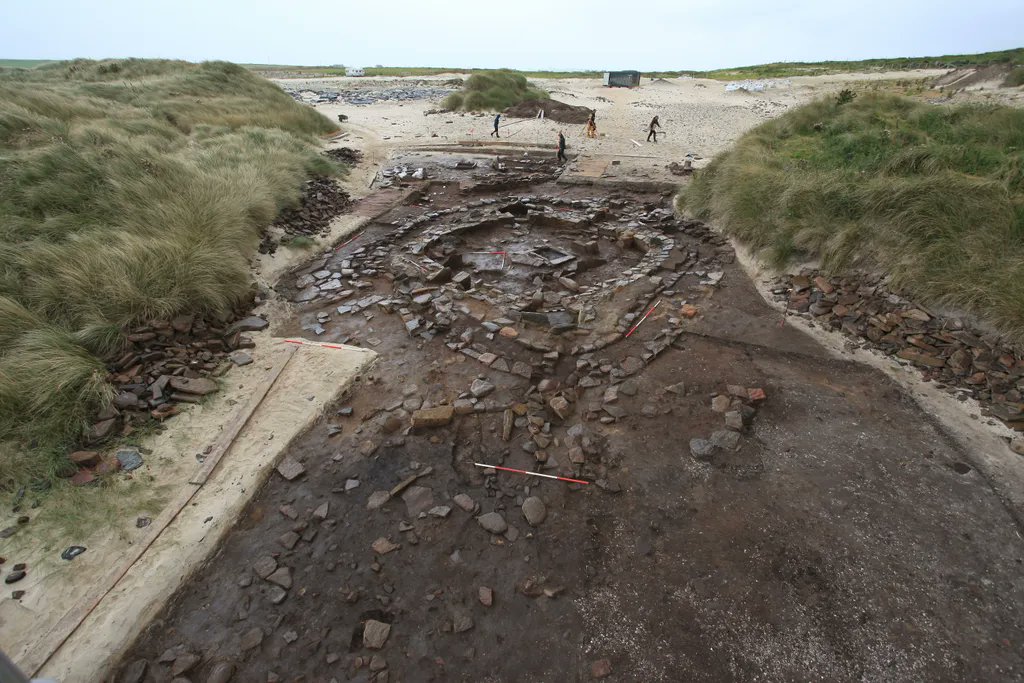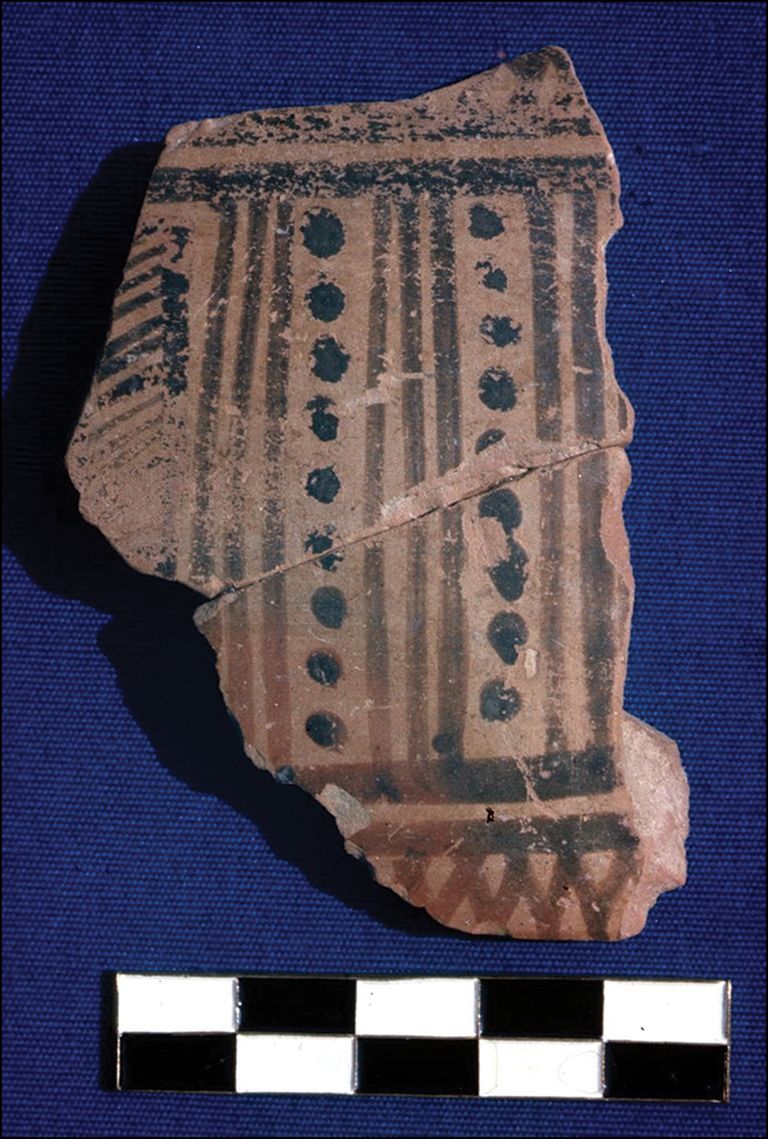🆕: Research at a 4000-year-old village in Orkney exploring the impact of a female-dominated wave of migration has revealed it led to a peaceful and productive period.
An #AntiquityThread (paper: buff.ly/3qLnUlY) 1/n 🧵
An #AntiquityThread (paper: buff.ly/3qLnUlY) 1/n 🧵

Note: This research analysed a cemetery at the site, so this thread will feature some human remains. 2/
The Links of Notland site on Westray is one of the best-preserved and most extensive prehistoric settlements in Scotland. 3/
📷: Location map of the site
📷: Location map of the site

“So far we have identified over thirty-five buildings including houses, workshops, and a sauna-house together with a cemetery containing the remains of some 105 individuals,” said Dr Graeme Wilson, from EASE archaeology. 4/
📷: Notland from above
📷: Notland from above

Recent research on ancient DNA from the site shows the migration by people with mainland European ancestry that had spread across Britain also reached Orkney. But unusually, the influx was female-dominated and didn’t lead to large cultural changes. 5/
eurekalert.org/news-releases/…
eurekalert.org/news-releases/…
This made it archaeologically invisible until now. It also had a unique impact on the site’s genetic makeup. 6/
📷: If something doesn't change, it's invisible
📷: If something doesn't change, it's invisible
“The men in the Notland community traced their descent from the original Neolithic population and their lineages continued to persist for at least another 1000 years,” said Dr Wilson. 7/
Elsewhere in Britain, these migrants replaced the existing Neolithic male lineage. 8/
📷: Proportion of ancestry in Britain in different periods, showing the shift from the existing Neolithic ancestry to continental ancestry in later populations.
📷: Proportion of ancestry in Britain in different periods, showing the shift from the existing Neolithic ancestry to continental ancestry in later populations.

As such, Dr Wilson and the team are continuing to study Notland to understand why ancient migration to the island took such a unique trajectory and what impact it had on the Orkney community. 9/
📷: Excavations at Notland
📷: Excavations at Notland

The team paired the aDNA data with further analysis of Notland’s massive cemetery, with over 100 varied burials – including a large tomb used as a family vault for centuries. 10/
📷: Plan of the cemetery
📷: Plan of the cemetery

The archaeologists found this cemetery was grouped into three households. The long history of the male lineage indicates men remained and inherited whilst women moved out. 11/
📷: Female burial at Notland
📷: Female burial at Notland

The researchers found the household number was stable, showing the property was not split between multiple heirs - if the population got too large people would have to move elsewhere. 12/
📷: Pair of houses at Notland
📷: Pair of houses at Notland

This population movement shows how Orkney was integrated into a wider community:
“These results demonstrate how Orkney was taking part in wider networks at a time when it was previously thought to be isolated and undergoing a kind of ‘recession’,” said Dr Wilson 13/
“These results demonstrate how Orkney was taking part in wider networks at a time when it was previously thought to be isolated and undergoing a kind of ‘recession’,” said Dr Wilson 13/
Such impartible inheritance appears to have been a Bronze Age development. This ensured each had sufficient resources to survive in the tough Orkney environment. 14/
📷: Tough unless you're a seal; by Claire Pegrum / CC BY-SA 2.0
📷: Tough unless you're a seal; by Claire Pegrum / CC BY-SA 2.0

As well as providing resilience, this system also explains the unique pattern of migration by the Beaker people – female migration between communities was the norm in Orkney and it was no different for the new arrivals. 15/
📷: Another female burial at Notland
📷: Another female burial at Notland

“The DNA shows that the community at Links of Noltland, was composed of local males and incoming females of continental descent,” said Dr Wilson, “The DNA shows not only the fact of immigration but also the way in which it was mediated.” 16/
However, life on Orkney did not remain totally unchanged: “New and more complex identities were forged which emphasised ties to the household and the village,” said Dr Wilson, “These are seen in the cemetery, where many different types of burial were found.” 17/
There were new ways to build community and identity and the adoption of new technologies and farming techniques. This blending of new and old ideas appears to have led to a peaceful and productive period. 18/
📷: Timeline of burial types at Notland, showing co-existence
📷: Timeline of burial types at Notland, showing co-existence

“Far from presenting an existential threat, as has sometimes been suggested, the influx of people appears here to have coincided with a period of social stability,” said Dr Wilson. 19/
If you want to find out more, the original research is 🆓:
Migration and community in Bronze Age Orkney: innovation and continuity at the Links of Noltland - Hazel Moore, Graeme Wilson, Mairead Ni Challanain, et al.
doi.org/10.15184/aqy.2…
20/20
🧵
Migration and community in Bronze Age Orkney: innovation and continuity at the Links of Noltland - Hazel Moore, Graeme Wilson, Mairead Ni Challanain, et al.
doi.org/10.15184/aqy.2…
20/20
🧵

• • •
Missing some Tweet in this thread? You can try to
force a refresh



















